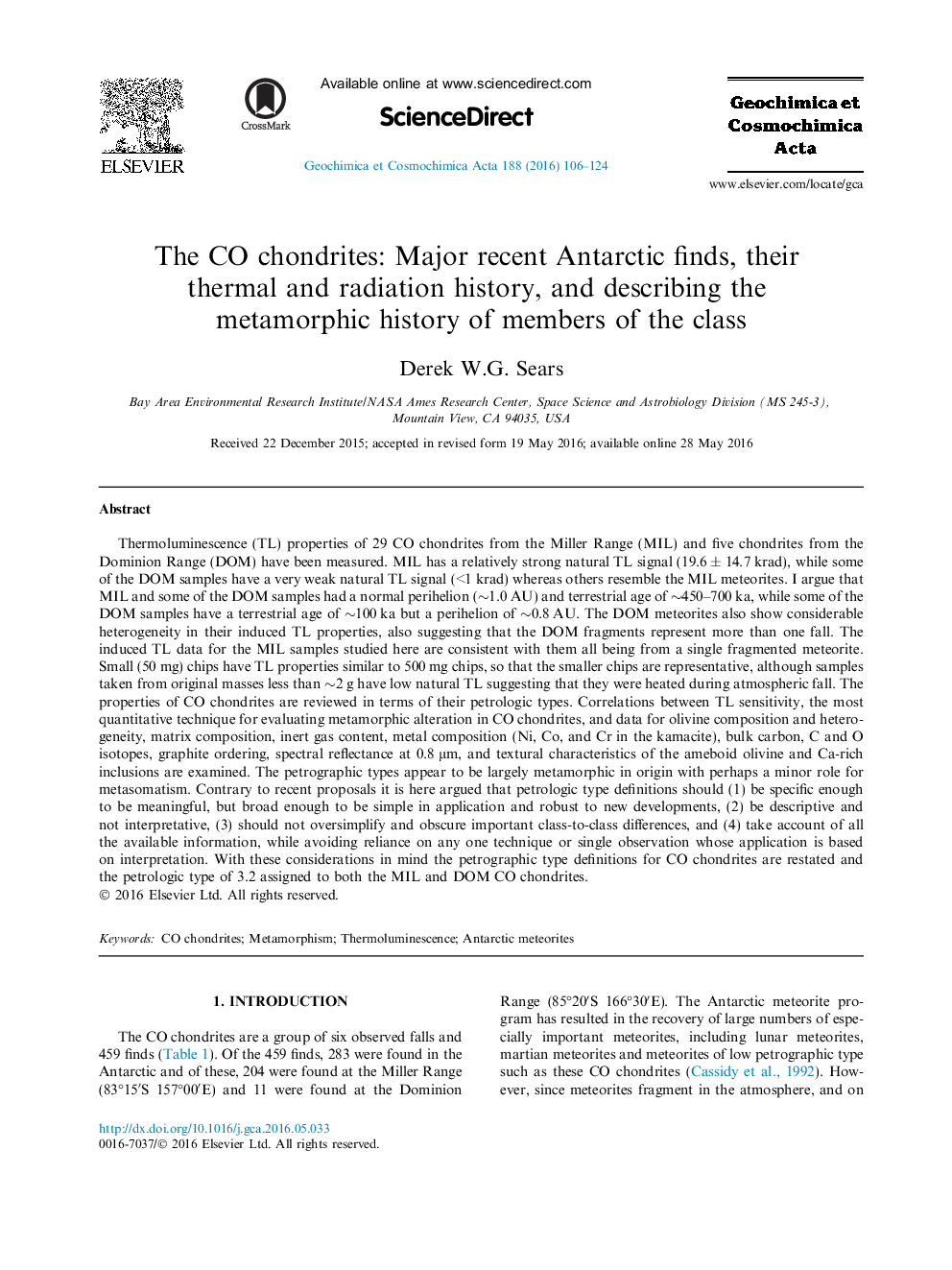| Article ID | Journal | Published Year | Pages | File Type |
|---|---|---|---|---|
| 4701764 | Geochimica et Cosmochimica Acta | 2016 | 19 Pages |
Thermoluminescence (TL) properties of 29 CO chondrites from the Miller Range (MIL) and five chondrites from the Dominion Range (DOM) have been measured. MIL has a relatively strong natural TL signal (19.6 ± 14.7 krad), while some of the DOM samples have a very weak natural TL signal (<1 krad) whereas others resemble the MIL meteorites. I argue that MIL and some of the DOM samples had a normal perihelion (∼1.0 AU) and terrestrial age of ∼450–700 ka, while some of the DOM samples have a terrestrial age of ∼100 ka but a perihelion of ∼0.8 AU. The DOM meteorites also show considerable heterogeneity in their induced TL properties, also suggesting that the DOM fragments represent more than one fall. The induced TL data for the MIL samples studied here are consistent with them all being from a single fragmented meteorite. Small (50 mg) chips have TL properties similar to 500 mg chips, so that the smaller chips are representative, although samples taken from original masses less than ∼2 g have low natural TL suggesting that they were heated during atmospheric fall. The properties of CO chondrites are reviewed in terms of their petrologic types. Correlations between TL sensitivity, the most quantitative technique for evaluating metamorphic alteration in CO chondrites, and data for olivine composition and heterogeneity, matrix composition, inert gas content, metal composition (Ni, Co, and Cr in the kamacite), bulk carbon, C and O isotopes, graphite ordering, spectral reflectance at 0.8 μm, and textural characteristics of the ameboid olivine and Ca-rich inclusions are examined. The petrographic types appear to be largely metamorphic in origin with perhaps a minor role for metasomatism. Contrary to recent proposals it is here argued that petrologic type definitions should (1) be specific enough to be meaningful, but broad enough to be simple in application and robust to new developments, (2) be descriptive and not interpretative, (3) should not oversimplify and obscure important class-to-class differences, and (4) take account of all the available information, while avoiding reliance on any one technique or single observation whose application is based on interpretation. With these considerations in mind the petrographic type definitions for CO chondrites are restated and the petrologic type of 3.2 assigned to both the MIL and DOM CO chondrites.
